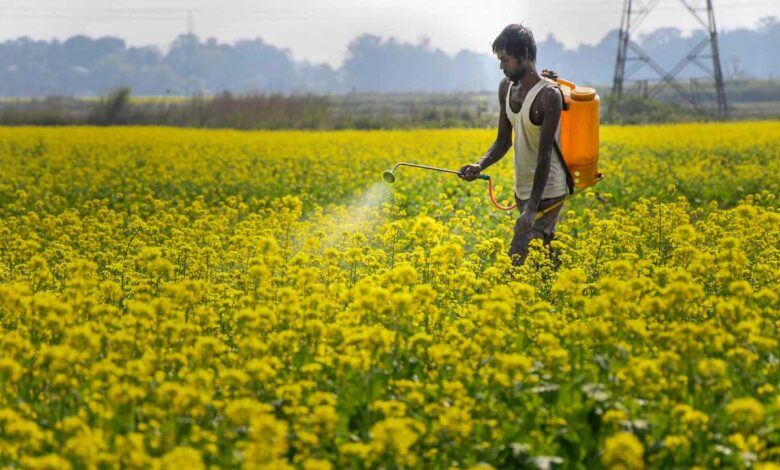Budget 2025: How it could strengthen India’s agricultural backbone

Citing the iconic words of Telugu poet and playwright Shri Gurajada Appa Rao, “A nation is defined by its people, not just its land,” the Union Finance Minister unveiled the Union Budget 2025-26 with the overarching theme of “Sabka Vikas,” reinforcing the government’s commitment to equitable growth across all regions and demographics.
This budget sustains the momentum for rapid economic expansion, inclusive progress, and increased private sector participation while uplifting household confidence and enhancing middle-class purchasing power. With a strong emphasis on Garib (poor), Yuva (youth), Annadata (farmers), and Nari (women), it introduces transformative measures in taxation, energy, urban infrastructure, mining, financial services, and regulatory frameworks to bolster India’s global competitiveness.
By prioritising agriculture, MSMEs, investments, and exports as the driving forces of Viksit Bharat, the Budget advances a vision of progress fuelled by reforms and inclusivity.
Agriculture remains the cornerstone of India’s economy, ensuring food security, employment, and economic resilience. With over half of the population dependent on agriculture for their livelihoods, the government has consistently implemented progressive policies and significant budgetary allocations to foster growth and stability in the sector. Over the years, this commitment has translated into robust growth in food production, enhanced farmer incomes, and strengthened rural infrastructure, positioning Indian agriculture for sustained prosperity.
Transformative Budget Allocations
Recognising the critical role of agriculture, the budget for the Department of Agriculture and Farmers’ Welfare has seen a substantial rise. From a modest allocation of ₹11,915.22 crore in 2008-09, it surged to ₹21,933.50 crore in 2013-14 and further to an unprecedented ₹1,22,528.77 crore in 2024-25. This tenfold increase underscores the government’s unwavering commitment to agricultural development and farmer welfare.
Record-Breaking Food Grain Production
India has witnessed a phenomenal rise in food grain production, a testament to policy support, modern farming practices, and technological advancements. In 2004-05, India produced 204.6 million tonnes of food grains, which increased to 252 million tonnes in 2014-15 and is now projected to reach 332.3 million tonnes in 2023-24. This increase has been instrumental in ensuring national food security and mitigating inflationary pressures.
Expansion in Cropped Area and Value Addition
The total area under food grain cultivation expanded from 120.2 million hectares in 2004-05 to 132.1 million hectares in 2023-24, highlighting a strategic expansion in cultivation. Alongside this, real Gross Value Added (GVA) in agriculture, forestry, and fishing grew from ₹13.85 lakh crore in 2004-05 to an estimated ₹26.42 lakh crore in 2023-24, underscoring the sector’s resilience and its growing contribution to the economy.
Enhanced Procurement and Support through MSP
The Minimum Support Price (MSP) mechanism has played a pivotal role in ensuring stable incomes for farmers. The MSP for paddy (common) rose from ₹850 per quintal in 2008-09 to ₹2,300 per quintal in 2023-24. Similarly, MSP for wheat increased from ₹1,080 per quintal in 2008-09 to ₹2,425 per quintal in 2023-24.
Consequently, the total MSP paid to farmers for paddy procurement soared from ₹4.40 lakh crore (2004-13) to ₹12.51 lakh crore (2014-24), and for wheat from ₹2.27 lakh crore to ₹5.44 lakh crore in the same period. This substantial increase has ensured financial stability for millions of farmers.
Direct Income Support through PM-KISAN
Launched in 2019, the PM-KISAN scheme has emerged as a game-changer by providing direct income support to small and marginal farmers. Under this initiative, more than ₹3.46 lakh crore has been disbursed to over 11 crore farmers through 18 installments, ensuring steady financial assistance and enhanced purchasing power for rural households.
Empowering Farmers through Crop Insurance and Credit Access
The Pradhan Mantri Fasal Bima Yojana (PMFBY), launched in 2016, has addressed the high premium burden on farmers and ensured significant claim settlements. Over the past eight years, 63.11 crore farmer applications have been enrolled, with claims exceeding ₹1.65 lakh crore. For every ₹100 paid in premium, farmers have received approximately ₹508 in claims, offering a crucial safety net against crop failures.
Institutional credit flow has also seen a remarkable increase, rising nearly threefold from ₹8.5 lakh crore in 2014-15 to ₹25.48 lakh crore in 2023-24. The Kisan Credit Card (KCC) scheme has played a crucial role in this expansion, benefiting small and marginal farmers. The proportion of these farmers accessing agricultural loans has grown from 57% in 2014-15 to 76% in 2023-24, ensuring financial inclusion and access to timely credit.
Market Reforms and Digital Integration through e-NAM
The National Agriculture Market (e-NAM) has revolutionised agricultural trade by integrating 1,410 mandis across 23 states and 4 Union Territories. With over 1.79 crore farmers and 2.63 lakh traders registered, e-NAM has facilitated transactions worth ₹4.01 lakh crore, ensuring better price realisation and eliminating middlemen inefficiencies.
Building Robust Agricultural Infrastructure
The Agricultural Infrastructure Fund (AIF), launched with a corpus of ₹1 lakh crore, has been instrumental in bolstering post-harvest management and community farming assets. As of December 2024, ₹52,738 crore has been sanctioned for 87,548 projects, catalysing investments worth ₹86,798 crore in agricultural infrastructure, including cold storage, processing units, and warehousing facilities.
Millets: India’s Superfood Revolution
In response to growing global demand and health consciousness, the government has championed millet production under the International Year of Millets initiative. With a budget outlay of ₹250 crore (2023-26) for millet research and development, India is poised to become a global leader in millet production. Production increased to 175.72 lakh tonnes in 2023-24, with productivity rising by 7% since 2019, reflecting India’s growing emphasis on nutritious and climate-resilient crops.
A New Dawn for Indian Agriculture
India’s agricultural sector has undergone a paradigm shift over the past decade, driven by progressive policy interventions, increased budget allocations, and strategic investments in technology and infrastructure. The substantial rise in food production, enhanced farmer incomes, market reforms, and digital integration are laying the foundation for a more resilient and self-sufficient agricultural ecosystem.
Moving forward, sustained policy focus, coupled with innovation and financial support, will be essential in ensuring that Indian agriculture remains the backbone of the nation’s economic and social fabric. The path ahead is promising, and the government’s unwavering commitment will continue to empower the farming community, fostering a new era of agricultural prosperity in India.
This Budget paves the way for a dynamic, self-sufficient, and globally competitive India. It reflects the ambitions of 1.4 billion citizens and charts a clear path to realising them. By strengthening the role of farmers, youth, women, and MSMEs, the government ensures inclusive growth, leaving no one behind. As the nation advances toward Viksit Bharat 2047, this Budget is more than just an economic blueprint— it is a bold declaration of progress and a unified commitment to national development.
—The author, Dr. Anil Agrawal, is former Member of Parliament, Rajya Sabha, and Chancellor, HRIT University. The views are personal.



